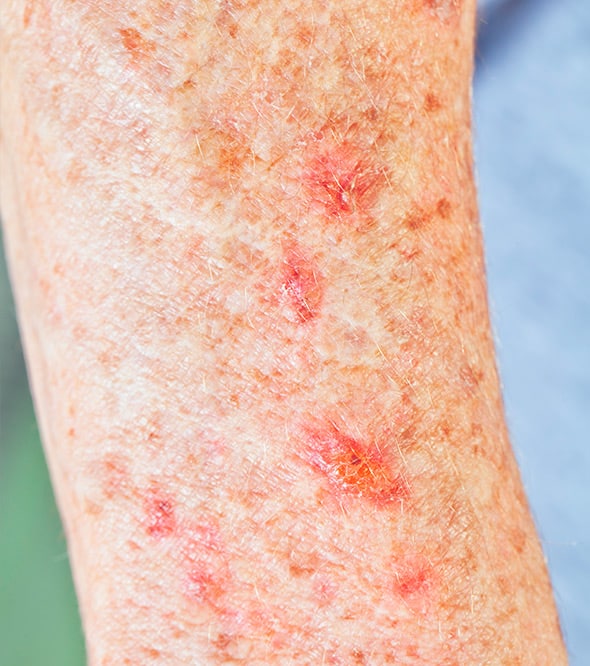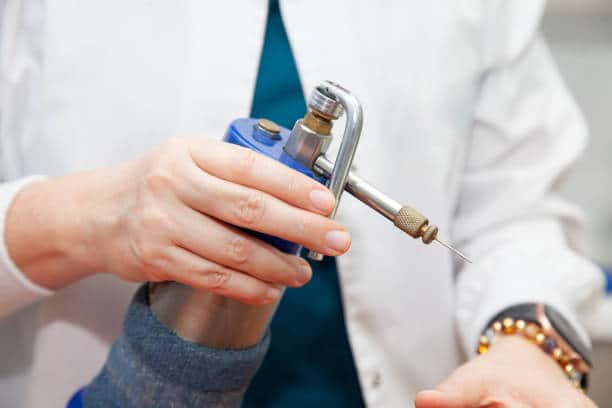We help patients detect and manage actinic keratosis (AK)—a common form of pre-cancerous skin damage caused by long-term sun exposure. Early treatment is essential to prevent progression to squamous cell carcinoma.
What Is Actinic Keratosis?
Actinic keratosis appears as red, rough, or scaly patches on sun-damaged skin. These lesions are considered pre-cancerous, and while most are benign, some may develop into squamous cell carcinoma (SCC) if left untreated.
AK most commonly appears on:
- Scalp
- Face
- Sides of the neck
- Chest
- Upper back
- Backs of hands and forearms
- Legs
Who Is at Risk?
- People with fair skin, freckles, or light eyes
- Those who burn easily in the sun
- Men and women over the age of 50
- Individuals who work or spend extended time outdoors
Prevention Tips
- Wear broad-spectrum sunscreen with SPF 30 or higher daily
- Reapply sunscreen frequently, especially after sweating or swimming
- Wear protective clothing and wide-brimmed hats
- Avoid peak UV hours and seek shade when possible
Physician Consultation Available
With a referral from your primary care provider, our physicians offer consultations and full skin assessments for actinic keratosis. Early identification and a personalized treatment plan can significantly reduce the risk of skin cancer progression.
How to Treat Actinic Keratosis
Our clinic offers evidence-based, minimally invasive therapies to treat AK effectively:
Topical Chemotherapy (Efudex®/Efucal)
Prescription creams applied to the affected area destroy pre-cancerous cells over a short course of treatment.
Liquid nitrogen is applied to freeze and eliminate abnormal skin cells quickly and effectively.



